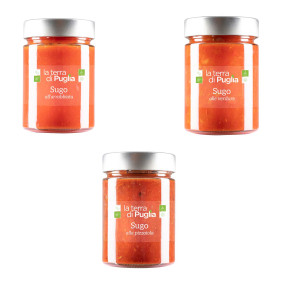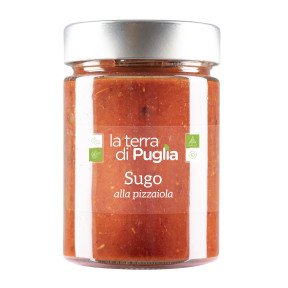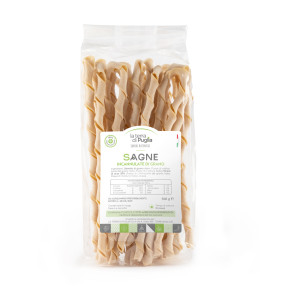Two words about orecchiette, the symbolic pasta shape of the Puglia region
Orecchiette are perhaps one of the great symbols of the Apulian gastronomic tradition. Here, in Puglia, they also call them "strascinate", to evoke the typical gesture that housewives made with their thumb or a blunt knife to prepare them by hand, dragging the dough and then turning it on itself.
In Puglia there is no Sunday without homemade pasta, and if it is orecchiette even better. Today, orecchiette are a pasta shape loved and enjoyed throughout Italy, due to their great versatility and their incredible ability to collect the sauce. Try them with a meat sauce such as ragù, or simply with a vegetable-based condiment. If you can't find the classic Apulian turnip tops, you can also try a good broccoli.
Information on orecchiette with burnt wheat
Orecchiette burnt wheat: taste, color, health
Burnt wheat ears are a typical delicacy of Apulian cuisine, characterized by their dark color and intense, smoky flavour. This particular type of pasta is made using burnt wheat flour, obtained by grinding partially burnt wheat, a practice originally created to make the most of available resources. Orecchiette with burnt wheat are distinguished by their rustic consistency and their strong taste, which goes perfectly with simple but tasty condiments such as vegetable-based sauces, extra virgin olive oil, garlic and chilli pepper. Burnt wheat pasta represents a perfect combination of tradition and culinary innovation, bringing to the table a piece of Apulian history and culture with a touch of modernity.
Burnt wheat flour: what is burnt wheat flour?
Burnt wheat is a typical ingredient of the Apulian tradition, born from the ingenuity of farmers who collected the wheat grains left in the fields after burning the stubble. This grain, once ground, produces a flour with a dark color and an unmistakable flavour, with toasted and slightly smoky notes. Mainly used for the preparation of pasta and bread, burnt wheat gives dishes a unique character rich in history, transforming simple recipes into gastronomic experiences with a rustic and authentic charm. Today, burnt wheat is valued for its uniqueness and its ability to evoke the flavors of the past, revisiting tradition with a touch of refinement.

























